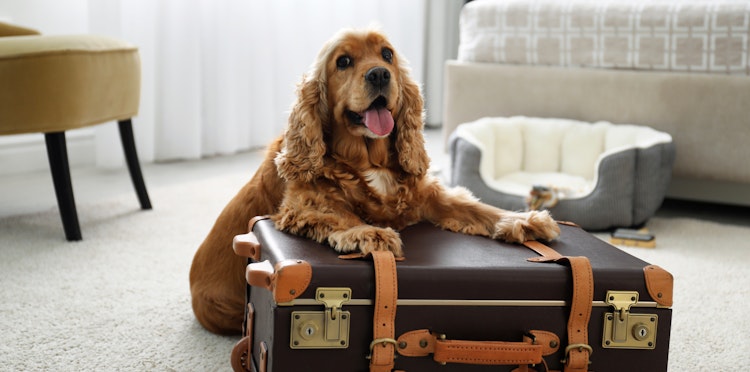A guide to travelling abroad with your dog

Taking the dog abroad
Research the rules that apply to the country you plan to travel to. The rules may differ between countries. Please check the rules before travelling.
You can read more about the EU rules here: https://food.ec.europa.eu/animals/movement-pets/eu-countries-specific-information_en
Microchipping and vaccinations
When travelling to an EU country it's essential for your pet to have:
-
A microchip
-
An EU pet passport
-
An up-to-date rabies vaccination
-
Either an animal health certificate or a recognized pet passport applicable in the destination country
-
Dogs also require tapeworm treatment if traveling directly to Finland, Ireland, Northern Ireland, Norway, or Malta.
These requirements also apply to assistance dogs.
Check the rules of the country you’re travelling to for any additional restrictions or requirements before you travel.
Your dog can be refused entry into a country and sent back to Ireland, in the worst case, euthanised if all requirements are not met. In some countries, the dog can in some cases be quarantined, you as the owner then have to pay for the quarantine. It is always your responsibility as the pet owner to ensure that all requirements are met.
Risk of infection for the dog
Stays abroad can mean a higher risk of infection for the dog. Infectious diseases such as parasites, such as tapeworm and heartworm, are common abroad. Therefore, dogs that have stayed abroad should be dewormed. Remember to protect your dog from ticks and mosquitoes abroad, consult your vet about a suitable preventive preparation for your dog. Also avoid the dog coming into contact with street dogs.
Dogs must be vaccinated against rabies well in advance of the trip.
Flying with a dog
If you are going to fly with a dog, you need to check with the airline what applies during the flight. Often it is fine to have a small dog in a cage inside the cabin, while a larger dog needs to be transported in the cargo area in a cage that is approved for transport. Also read about which national regulations apply on site in the country you plan to travel to.
Leave the dog with the dog sitter
If travelling with your dog is not a possibility and you choose to leave your dog with a dog sitter while you are on the road, it is important that you think about giving clear instructions. Here are suggestions for a remember list:
-
What food does the dog eat? What times does the dog eat and how much?
-
How often does the dog go for a walk? When is the dog's first and last break usually?
-
Telephone number for the nearest veterinarian.
-
Phone number for insurance company and insurance number.
-
Does the dog have any specific rules? For example, don't beg, don't pull on the leash, sit before food, etc.
-
Can the dog be alone at home with the dog sitter?
-
Could there be problems when, for example, meeting other dogs or children
Boarding kennels
If your dog cannot accompany you on the trip and you have no one in your area who can be a dog sitter, a boarding kennels can be an alternative. Remember to get your dog vaccinated against kennel cough before opting for a boarding kennel. When choosing a boarding kennels, you should be out in good time and think through what is important to you and your dog. Please visit the boarding kennels before you decide and check that the boarding kennels does not have any remarks from the county board's animal welfare inspector.
Consider this when choosing a boarding kennel
-
What routines does the boarding kennels have regarding resting and grooming?
-
What vaccinations are required? Remember to vaccinate your dog at least two weeks before it is to stay at a boarding kennels.
-
What liability and insurance does the boarding kennels have?
-
Do the staff have appropriate training?
-
Write in-adjustment agreement
Taking the dog on the drive
If your dog is to accompany you on the car journey, it is important that you transport your dog safely during the car journey. You can do this by using a transport cage, load grid or safety belt that is adapted for dogs.
Motion sickness in dogs
Many dogs have no problem with being in moving cars, but some dogs get motion sickness. To avoid motion sickness, you can train the dog to get used to driving. Start by just sitting in the car with the dog without going anywhere. Then you can start going short distances and feel free to go to a fun place that the dog likes. Avoid giving the dog food before you go in the car if the dog tends to get nauseous and vomit in the car. Your vet can also prescribe motion sickness tablets for your dog.
Never leave the dog alone in the car
The temperature outside does not have to be particularly high for it to quickly become too hot for the dog inside the car. Even if you open a crack in the window or have parked the car in the shade, the temperature can rise quickly. Also keep in mind that cold cars can also be a danger to the dog.


